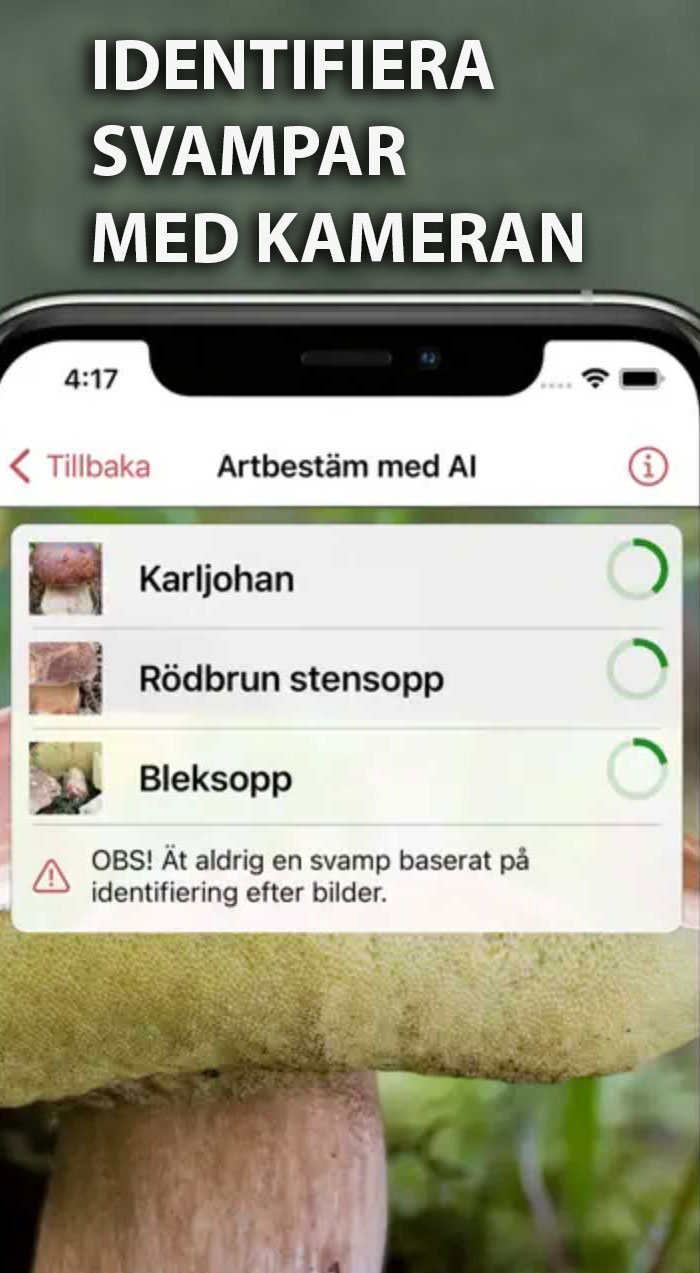Min gamla katta hade smak för råa Trattkantareller. Hon blev lite hård i magen, men i övrigt verkade hon inte ha några problem med det, så hon fick sno sin “andel” ur svampkorgen om hon ville. Det var lättare så än att jaga och försöka lirka ut hattarna ur munnen på henne.
Generellt så är matsvampar inte heller farliga för våra husdjur, men det verkar inte finnas några djupare studier på området så det är förstås bäst att alltid ta det säkra före det osäkra.
Du får gömma svamparna du själv vill äta nästa gång ;-)
Hittade en text på nätet om hur man kan känna igen en potentiell svampförgiftning hos sin katt:
Mushroom poisoning occurs as a result of ingesting toxic mushrooms. Not all mushrooms are poisonous, but each type of poisonous mushroom can cause different signs of illness. Poisonous mushrooms are classified into four main categories, based on the clinical signs they cause, or into seven categories, based on the toxins they contain. The onset of clinical signs may occur anywhere from minutes to hours following ingestion.
Mushroom toxicity is most commonly associated with curious kittens.
What to Watch For
• Vomiting
• Diarrhea
• Abdominal pain
• Lethargy
• Jaundice (yellow skin color)
• Seizures
• Coma
• Excess salivation
Diagnosis
When poisonous mushroom ingestion is suspected, initial blood tests are done to evaluate the overall health of the cat.
High liver and kidney enzymes may be seen 24 to 48 hours after ingestion of certain mushrooms, together with low blood sugar and blood potassium levels.
While these are not specific for mushroom poisoning, when coupled with known ingestion or at least suspicion of ingestion, they should alert you to the possibility.
Since there is no specific test for mushroom poisoning, identification of mushroom parts in the vomit or stomach contents is the only definitive means for making a diagnosis of mushroom poisoning.
Treatment
Treatment varies, and largely depends on the specific mushroom that has been ingested and potential clinical signs associated with the mushroom. One or more of the following may be recommended.
• Induction of vomiting
• Administration of activated charcoal (to absorb mushroom/toxin)
• Fluid therapy to maintain hydration
• Treatment for kidney or liver failure if it develops
• Treatment for seizures when present
Home Care and Prevention
There is no adequate home care for poisonous mushroom ingestion. If you suspect that your cat has eaten a dangerous mushroom, contact your veterinarian immediately.
The best way to prevent ingestion of poisonous mushrooms is to keep your cat away from mushrooms. Periodically check your yard and remove any mushrooms, and do not allow your cat to roam unattended through the neighborhood.
http://www.petplace.com/cats/mushroom-poisoning-in-cats/page1.aspx
Svara på inlägget ovan genom att fylla i formuläret nedan
OBS! Formuläret nedan är till för att svara på frågan i tråden ovan. Håll dig till ämnet och den ursprungliga frågan när du skriver ett svar. SKAPA ETT NYTT INLÄGG om du istället vill ställa en ny fråga eller starta diskussion i ett annat ämne. Olämpliga inlägg som inte följer forumreglerna kan komma att raderas.




